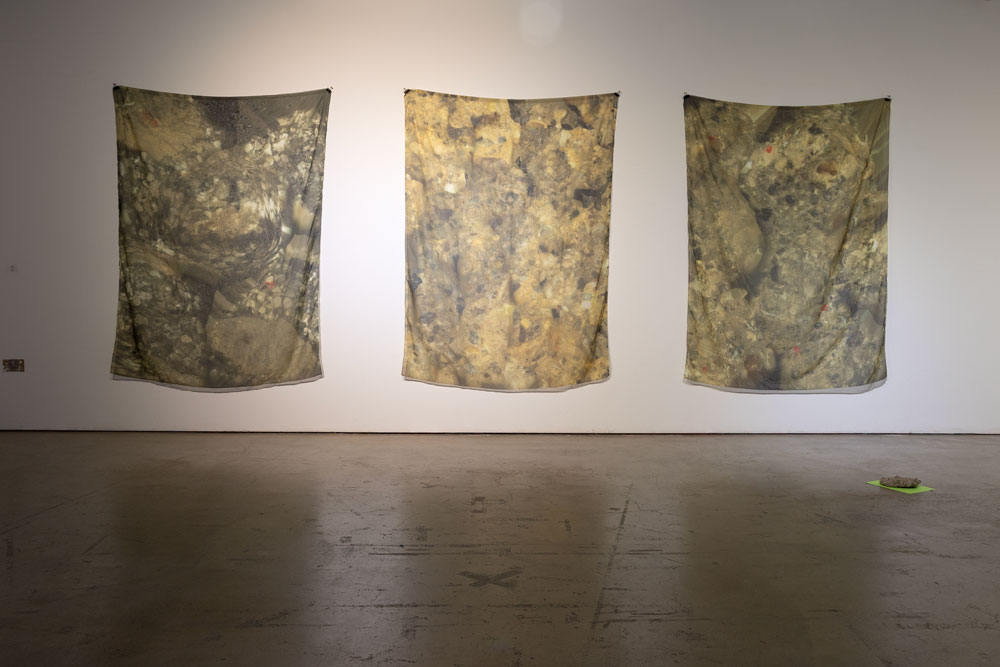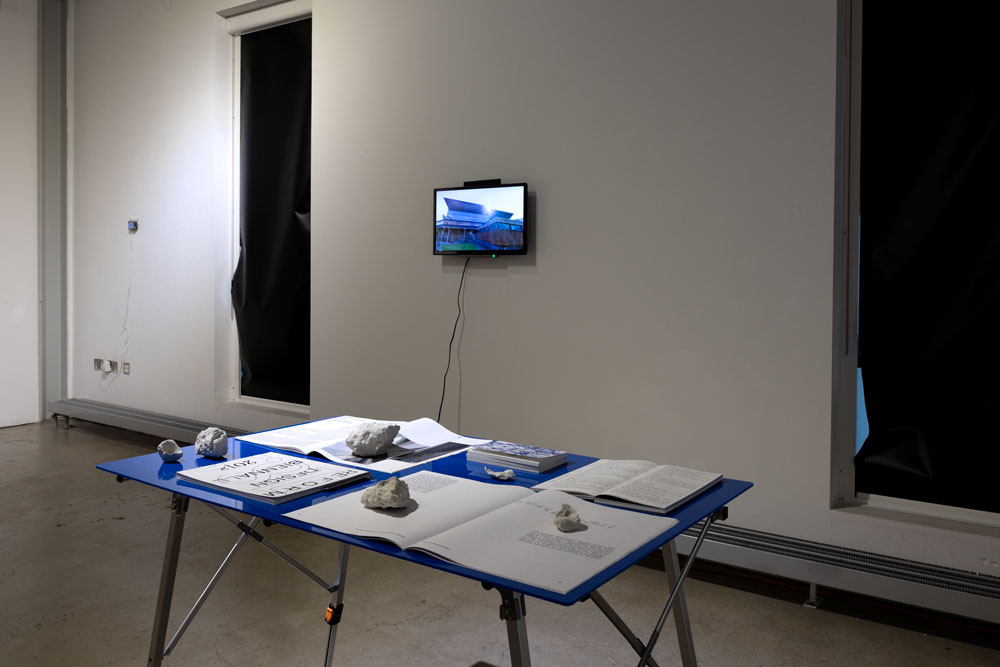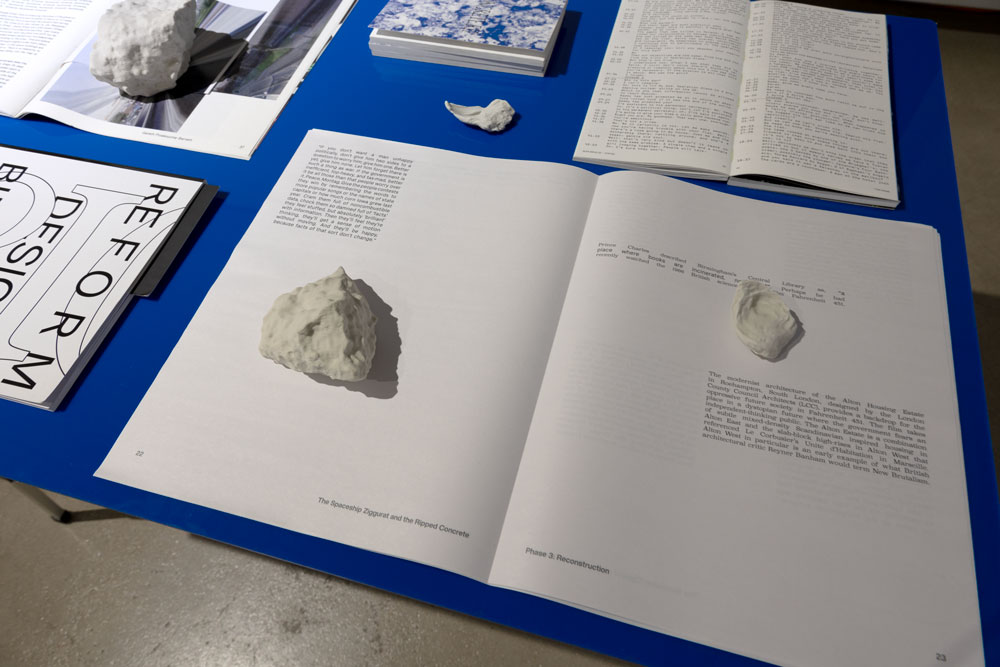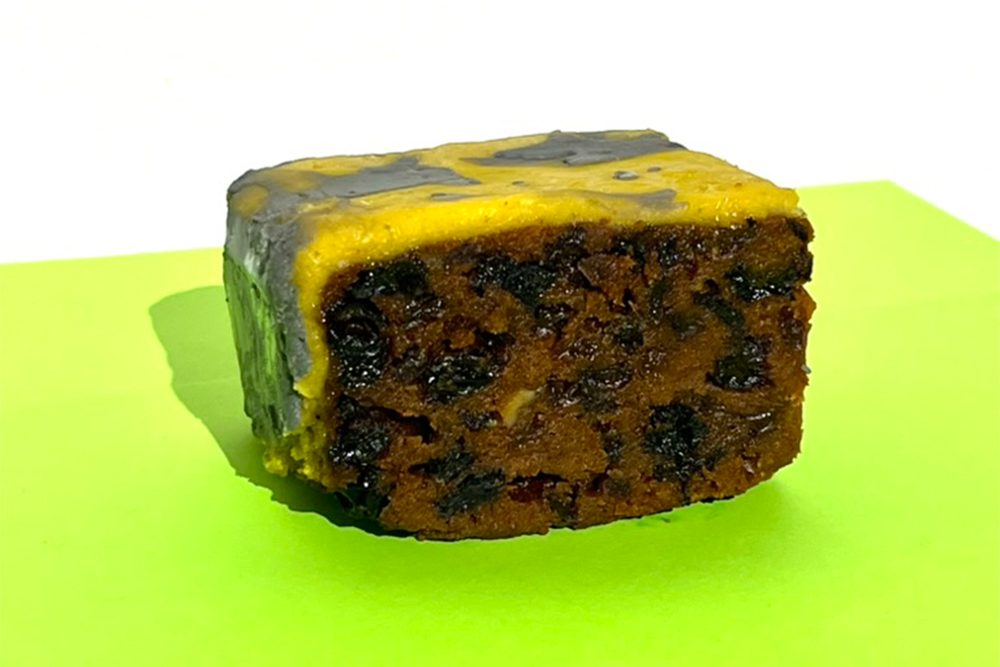︎︎︎home︎︎︎
︎︎︎The Spaceship Ziggurat and the Ripped Concrete: Digging in the Internet for the Ruins of the Birmingham Central Library︎︎︎
Submitted for the Degree of Doctor of Philosophy
Critical and Historical Studies, School of Art & Humanities
At the Royal College of Art (2024)

This is a story about a building.
It was a building that was once made of concrete.
It is a building that has now been demolished.
There were no explosions, fireworks or light shows, just a slow and brutal deconstruction, an unspectacular spectacle.
It is a site of absence. But in the absence there remains possibility. The possibility of regeneration.
This is a story about the future. This is also a story about the past. It is the future in the past and the past in the future, a future future in the past and a past future in the future.
This is a story about movement and mutation. It is about stable and unstable spaces. It is about dislocation and disorientation. It is a forensic fictioning.
It was a building that was once made of concrete.
It is a building that has now been demolished.
There were no explosions, fireworks or light shows, just a slow and brutal deconstruction, an unspectacular spectacle.
It is a site of absence. But in the absence there remains possibility. The possibility of regeneration.
This is a story about the future. This is also a story about the past. It is the future in the past and the past in the future, a future future in the past and a past future in the future.
This is a story about movement and mutation. It is about stable and unstable spaces. It is about dislocation and disorientation. It is a forensic fictioning.
Documentation of practice:
︎Phase One Documentation︎︎︎
︎Phase Two Documentation︎︎︎
︎Phase Three Documentation︎︎︎
︎Phase Three (NOIA Magazine pg 38-47) ︎︎︎
︎Phase Three (Fractured Perspectives Script)︎︎︎
︎Phase Three (Concrete RIP book)︎︎︎
︎Phase Conclusion Documentation︎︎︎
Documentation of Viva Exhibition:

![]()
![]()
![]()
![]()
![]()
Supporting video/moving image work:
.
On The Subject of Precarity
4 Google Street View Walks
The Game
Fractured Perspectives
Common Ground
Supporting Links:
︎www.concrete.rip︎︎︎
︎Reform Design Biennale︎︎︎
︎On The Subject of Precarity︎︎︎
︎Hard Blink︎︎︎
︎Fractured Perspectives︎︎︎
︎By The City︎︎︎
︎Common Ground︎︎︎
︎The Spaceship Ziggurat and the Ripped Concrete: Digging in the Internet for the Ruins of the Birmingham Central Library︎︎︎
.





